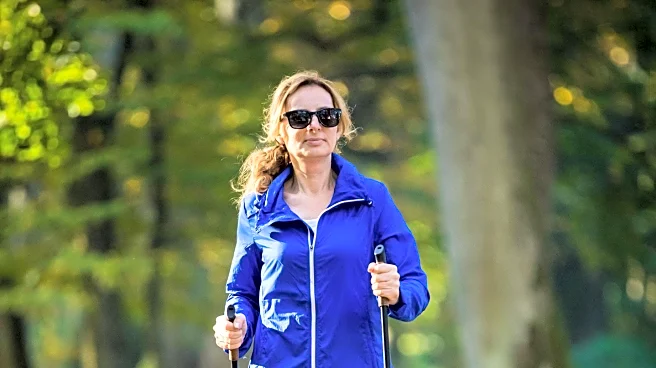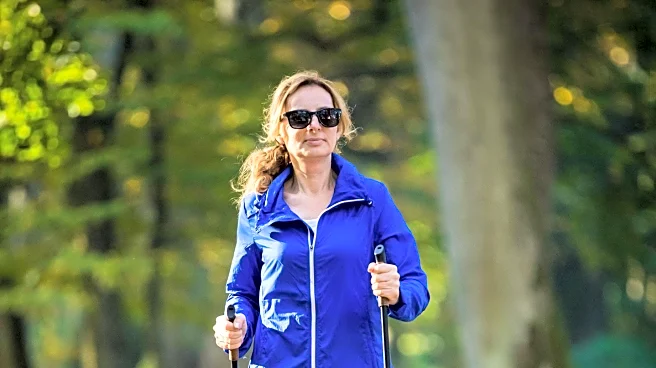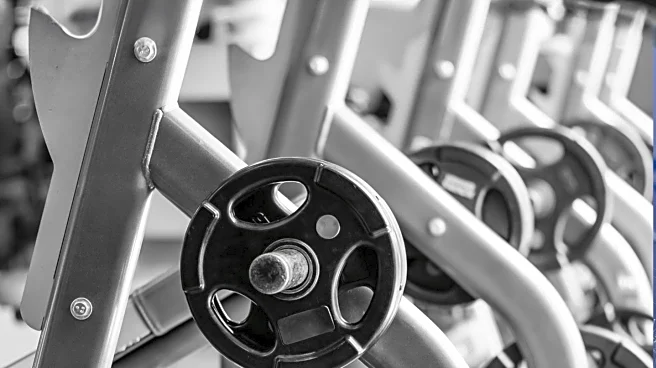What's Happening?
A recent study has examined the effectiveness of high-intensity interval training (HIIT) Nordic walking versus traditional strength training in preventing muscle loss among postmenopausal women. Conducted
over 12 weeks, the study involved 71 healthy women aged 60-79, divided into three groups: a HIIT Nordic walking group, a strength training group, and a control group with no exercise intervention. The research found that both exercise forms significantly improved key markers of muscle health, such as mobility and knee joint flexor strength. However, each exercise type offered unique benefits. Strength training led to improvements in walking speed, hand-grip strength, and reductions in body fat mass and BMI. Conversely, Nordic walking enhanced limb lean mass and skeletal muscle index.
Why It's Important?
This study is significant as it provides insights into effective exercise strategies for combating sarcopenia, the age-related loss of muscle mass, which is particularly prevalent among postmenopausal women. The findings suggest that both Nordic walking and strength training can be beneficial, but the choice of exercise may depend on individual goals and body composition. For women at a normal weight, Nordic walking may be more advantageous, while those who are overweight might benefit more from strength training. This information is crucial for healthcare providers and fitness professionals in designing personalized exercise programs that address the specific needs of postmenopausal women, potentially improving their quality of life and reducing the risk of falls and other health issues.
What's Next?
The study's findings could lead to more tailored exercise recommendations for postmenopausal women, encouraging them to incorporate either or both forms of exercise into their routines. Fitness and health professionals may use this data to guide clients in choosing the most suitable exercise based on their health goals and physical condition. Further research could explore the long-term effects of these exercises on muscle health and overall well-being, potentially influencing public health guidelines and exercise recommendations for older adults.
Beyond the Headlines
The study highlights the importance of exercise variety and personalization in fitness regimens, especially for older adults. It underscores the need for a balanced approach to physical activity that considers individual health conditions and goals. This research may also prompt discussions on the accessibility of different exercise forms and the need for community programs that support diverse fitness activities for aging populations.











